Looking alert, surprised, and excited at the same time, dog breeds with pointy ears are undoubtedly some of the cutest in the world. But aside from looking adorable, upright ears are also a sign of evolution gone right: gifted through generations of ancestors, erect ears enhance a dog’s ability to capture sound. This was a key survival feature for our dog’s wild ancestors who used them to pick up sounds from prey, danger, and other important things in their environment. While our modern pups no longer need their pointy ears for survival, many breeds still have them. Here are some of our favorite ones.
Siberian Husky
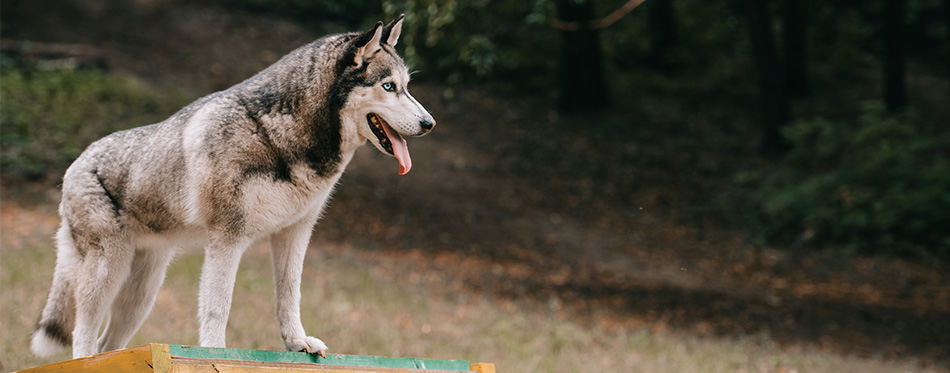
Many dog breeds with pointy ears belong to the working group, and one of the most trusted working canine breeds in the North is the Siberian Husky. Born for speed, agility, and endurance, this Nordic racer can travel hundreds of miles over snow-covered terrain. It’s perfect for expeditions because of its versatility and uncanny resilience. And with its pointy ears, the Siberian Husky is the closest thing you can get to a grey wolf.
One of the reasons why the Siberian Husky was able to retain the erect, almost-triangular ear shape of the wolf is because it did not undergo significant selective breeding. Many of the dog breeds we have today have floppy ears because of selective breeding practices. This is also known as domestication syndrome. While the Chukchi people of Siberia domesticated the Husky, they never sought to change its wolf-like appearance.
There is another characteristic that the Husky was able to retain from its wolf ancestors – howling. This dog is also an excellent escape artist, so keep that in mind if you’re considering getting one for your family. That said, the Chukchis raised Huskies in their respective families, so they’re good with children. On the other hand, they’re not great with small animals.
Take a look at our review of the Best Dog Food for Huskies.
German Shepherd
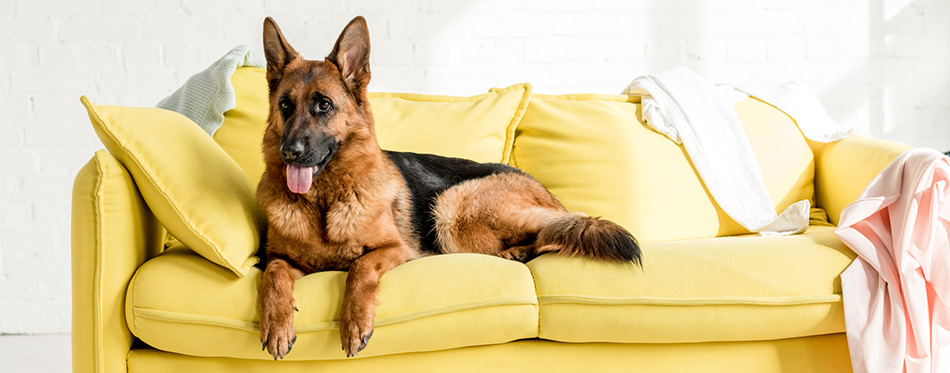
If the Siberian Husky is the undisputed king of working dogs in the cold North, the German Shepherd is the king of herding dogs in the temperate zones. Known for its intelligence, obedience, strength, and trainability, as well as a graceful stance made more stunning by its triangle-shaped erect ears, the German Shepherd is the ultimate guard and watch dog.
The GSD shares its ancestry with the Dutch Shepherd and the Belgian Shepherd. They are all descendants of the continental sheepdog prior to the 19th century. Unfortunately, no one knows where the continental sheepdog came from. However, it is also possible that a GSD has the grey wolf for an ancestor. This would help explain the many similarities that the GSD shares with a wolf.
German Shepherds are self-assured and always willing to learn and work. They thrive when they have a job, or some sort of purpose in their everyday life. Whether that’s herding a flock, guarding a home, or comforting the sick, the GSD is at its best behavior when there is work to be done. Because of this, the GSD is a favorite among law enforcement units, military special forces, and rescue organizations.
Check out our guide on the Best Dog Food for German Shepherds.
West Highland Terrier
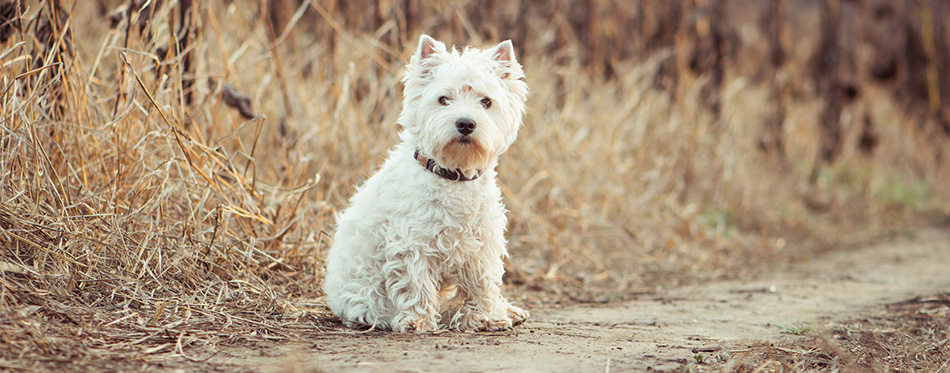
The Westie is a medium-sized terrier with cute little pointy ears. It’s also a very efficient ratter – its very first owners used its remarkable hunting abilities to get rid of rodents in farms and houses. Today, the Westie is a favorite among families who lead a more active lifestyle than most.
Westies are a very hardy breed. While intelligent and very curious, the West Highland Terrier can be stubborn, making it quite difficult to train. In fact, there are reports of Westies undergoing several re-training courses throughout their lifetime. However, it’s worth mentioning that this dog requires consistent one-on-one training that utilizes positive reinforcement methods. When trained properly and by a right trainer or owner, the Westie can become a very well-behaved dog, indeed. Like all terriers, this pooch too is quite inquisitive and investigative; unfortunately, like all terriers, it also tends to bark a lot and dig holes in the backyard.
The ears of the Westie stand like small pyramids on top of its head. They have a wider base and a shorter apex compared to the German Shepherd’s tall ears. The shape of the Westie’s ears is enough to let it hear the faint scratches of rodents from behind a wall, so it’s a good choice for folks living in the countryside. The West Highland Terrier is a very loving, loyal, and self-confident breed. It can be very independent too, and as such, not that great with other dogs and animals.
Australian Cattle Dog
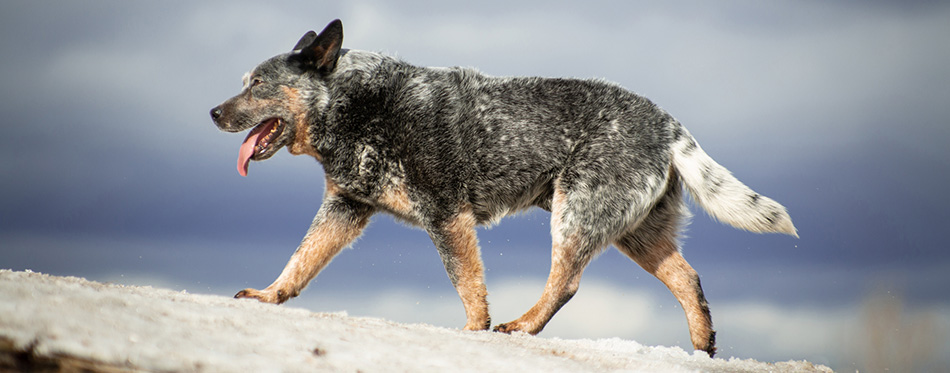
This is a working dog that shares many characteristics with the shepherd dogs of Europe. However, the Australian Cattle Dog is tougher and more resilient than its European counterparts; not surprising, considering that the Australian landscape can be more unforgiving than the fields of Europe.
The Cattle Dog, also known as the Blue Heeler, is the result of the combination of a European herding dog and the native Australian dingo. It was Thomas Hall who bred the very first Australian Cattle Dog in the 19th century, using a herding dog from Northumberland in England and crossing it with a tamed dingo. This resulted in a dog that had the work ethic of European shepherd dogs and the resilience and toughness of the dingo.
Heelers make excellent cattle herders. They nip at the heels of cattle to drive them in one direction, so needless to say, they are energetic dogs. They’re also a highly intelligent breed with an independent streak. To best utilize their talents, you should continuously train your Heeler; participation in challenging and interesting activities such as agility and herding is also recommended.
Akita Inu
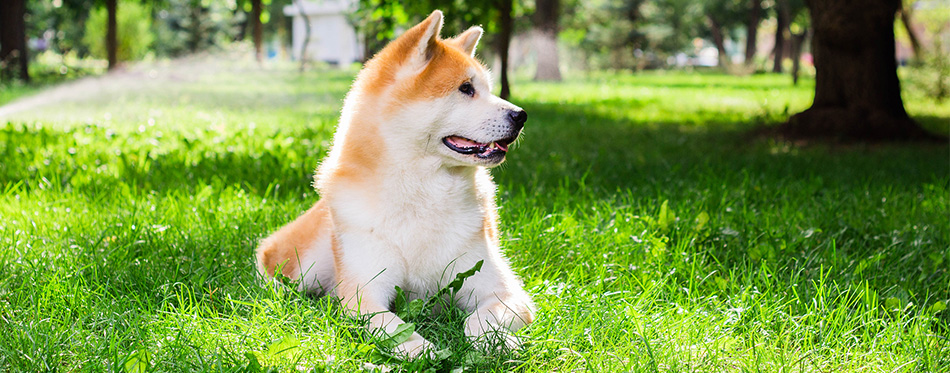
The pride of the Japanese people, very few dogs with pointy ears can match the loyalty of the Akita Inu to its family. This breed belongs to the same family of dogs as the Siberian Husky and the German Shepherd, so it is not surprising that they too have pointy ears and other wolf-like features.
The Akita is a very independent dog, with a dominant personality. Extremely territorial, it makes for an excellent watch dog and guardian of property. While loyal and affectionate with its family, the Akita is anything but friendly to strangers. It is for this reason that some countries, including Spain, Ireland, the Bermuda Islands, and Ukraine, have restrictions on the ownership of Akita Inus. While these countries do not ban the dogs, they do expect owners to be more responsible.
Akita Inus are also one of the few dog breeds with interesting feline characteristics. For example, they are known for being fastidious groomers, especially after eating. Despite having a thick, luxurious coat, Akitas rarely if ever suffer from doggy odor – they’re that meticulous when it comes to their hygiene. That said, like all dogs, Akitas too require regular (but minimal) brushing to look and feel their best.
Samoyed
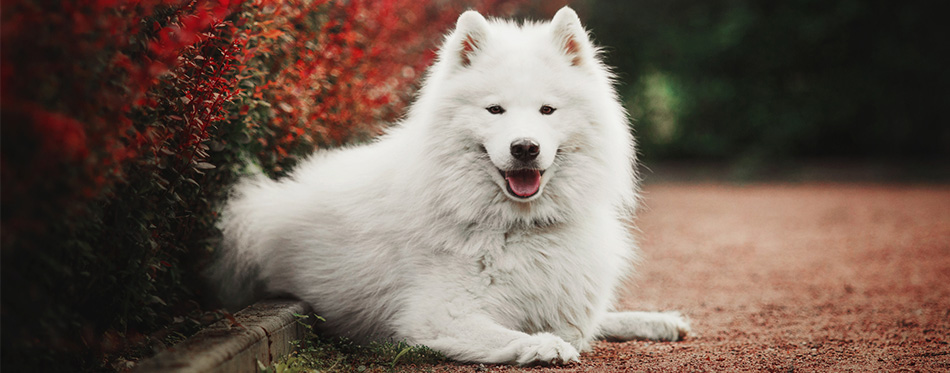
The Samoyed may not look like the classic wolf, however, it does boast those characteristic pointy ears and a long snout which are very common among wolf-like breeds. This breed could be considered the western equivalent of the Siberian Husky; in fact, they only differ from Huskies in terms of their curly tail and white-only fur. The Samoyeds are the descendants of the herding dogs of the Nenets people in Siberia.
The ears of the Samoyed are like those of the Akita Inu and the West Highland Terrier: small, short and wider at the base than they are at the top. Some Samoyeds will have a slight tint of light or dark brown coloring on the tip of their ears. These adorable brown ear-tipped Samoyeds are also known as ‘biscuits’ for obvious reasons.
Samoyeds have an affable disposition. They love children and are good with other animals as well if properly trained. While friendly and outgoing are nice traits to have in a pet, they’re not something you’d want in a guard dog, for example, so keep that in mind if you’re considering getting a Samoyed. With that being said, this breed is a great choice if you’re looking for a friendly family pet or a watchdog.
Belgian Malinois
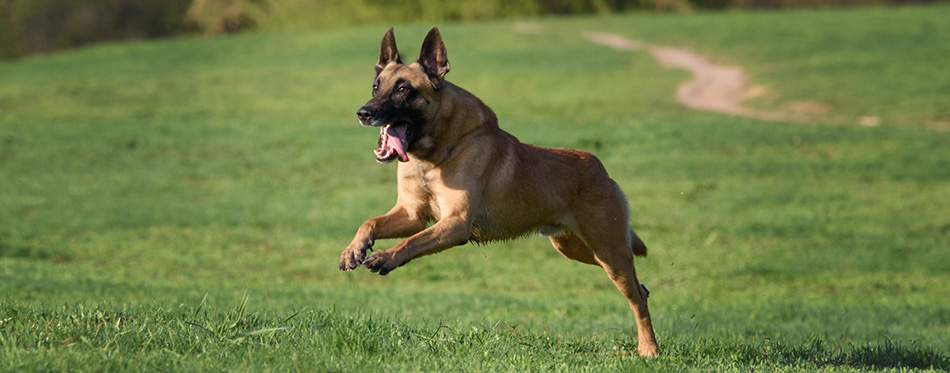
Sleeker and faster than the German Shepherd, the Belgian Malinois is the favorite of Special Forces units. They belong to a special breed of working dogs that are obedient, trainable, and very intelligent. Fun fact: they played a very important role in the elimination of both Osama bin Laden and Abu Bakr al-Baghdadi.
Two of the distinguishing physical characteristics of the Belgian Malinois are its black muzzle and erect ears. They complement the dog’s short mahogany coat, complete with black markings. The Malinois has one of the highest energy levels in the dog kingdom. Interestingly, they often exhibit their puppy-like energy until they reach 3 years of age, while some dogs display such energy levels up to 5 years.
The Belgian Malinois is a true working dog. It excels in dock diving, showmanship, obedience, tracking, herding, and flyball events. It is also a favorite among the world’s finest military forces, including the US Navy SEALS, the US Secret Service, the Indo-Tibetan Border Police, and the Israel Defense Forces. The breed is also a very efficient poacher hunter in the Kruger National Park in South Africa.
Chihuahua
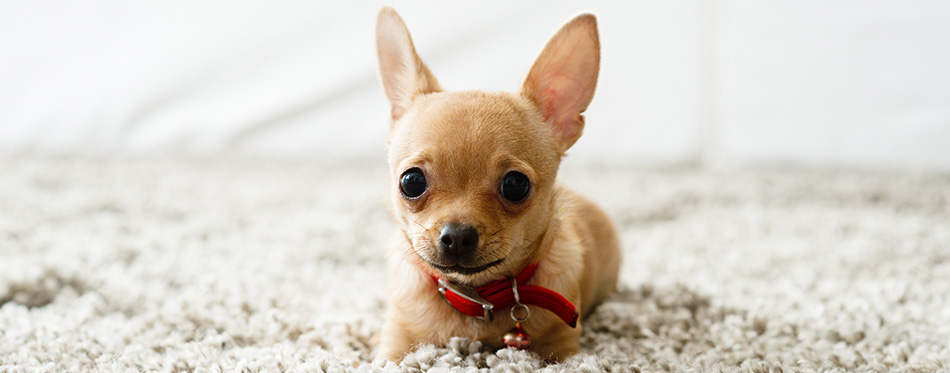
The quintessential purse puppies and favorites of celebrities and socialites alike, Chihuahuas have got to be one of the cutest dogs with pointy ears. They have this large and erect ears that look adorable on their rounded faces, and some have featherings on their ears that fan out to give them an even more adorable look.
The temperament of the Chihuahua is mostly dependent on its owner. While they’re prone to the phenomenon known as the small dog syndrome, this is often the case with dogs that do not undergo early obedience training and socialization. Unlike some toy breeds, the Chihuahua is generally eager to please its owner; however, unless they receive early and consistent training, they can become reckless and bad-mannered indeed. This is especially true with first-time owners who tend to allow their pups to behave however they please.
Chihuahuas tend to be very loyal to one very specific person, but they can also be affectionate to others. However, the level of affection that they show to others pales in comparison to their favorite human being. As such, these small but fierce pooches can be very protective.
Find out more about Dog Food for Chihuahuas.
Swedish Vallhund
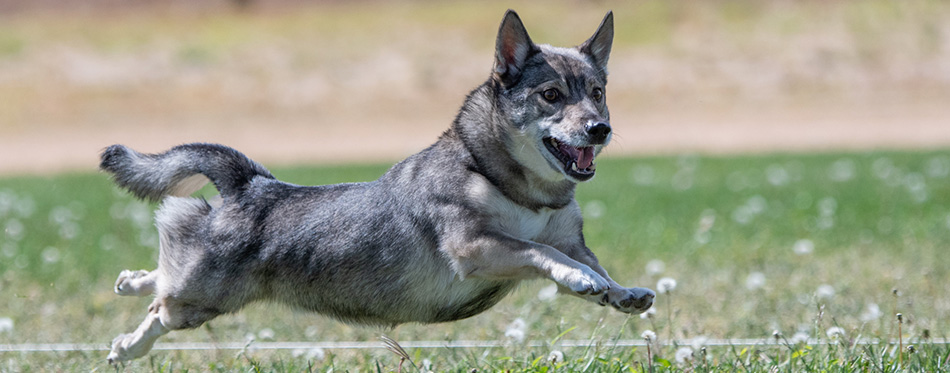
This is an ancient dog breed that has existed since the 8th century in the Vastergotland region of Sweden. It is an excellent herding, guarding, and watching canine with large, wolfish erect ears. When the Vikings crossed the English Channel, they brought with them the Swedish Vallhunds, which later became one of the founding parents of the Lancashire Heeler and the Welsh Corgi.
Despite their short and stubby legs, the Vallhunds have the spirit of their herding and hunting ancestors, Scandinavian spitz dogs and Welsh corgis. Built long and low to the ground, the Vallhunds are excellent herders – they nip at the cattle quickly, easily avoiding kicks to the head.
Today, the Swedish Vallhund is a favorite pet dog among many families. It is smart and exceptionally easy to train as long as you use positive, reward-based training methods. The Vallhund also performs well in rally obedience, flyball, herding, hiking, tracking, and showmanship trials. Needless to say, this is a dog with boundless energy who needs an equally active owner or family to be healthy and happy.
Bull Terrier
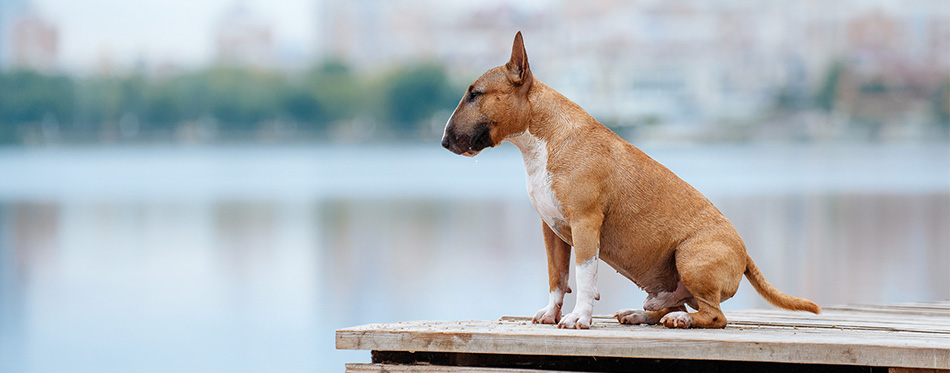
You can never mistake the Bull Terrier for any other canine breed thanks to its pointy ears, long egg-shaped head, and small, deep-set, dark triangular eyes.
The Bull Terrier is the subject of a few breed-specific legislations across the globe. This is perhaps related to its origins, where “bull and terrier” canine breeds are notorious for their abilities in blood sport arenas. However, a recent German study determined that Bull Terriers have almost the identical temperament as Golden Retrievers, which is to say, friendly and easy-going.
However, this does not mean that the Bull Terrier is the perfect pet for everyone; far from it! This dog requires an experienced owner who knows how to train and socialize the typical terrier breed. But with the right training and early socialization, the Bull Terrier can be an excellent pet companion as they’re courageous, playful, and devoted to their owners. Left to their own devices though, and they can be quite mischievous.
Sources:
- Chihuahua, Vetstreet
- Belgian Malinois, PetMD
- Genetic Diversity Testing for Samoyed, UC Davis School of Veterinary Medicine
- Akita, VCA Hospitals

